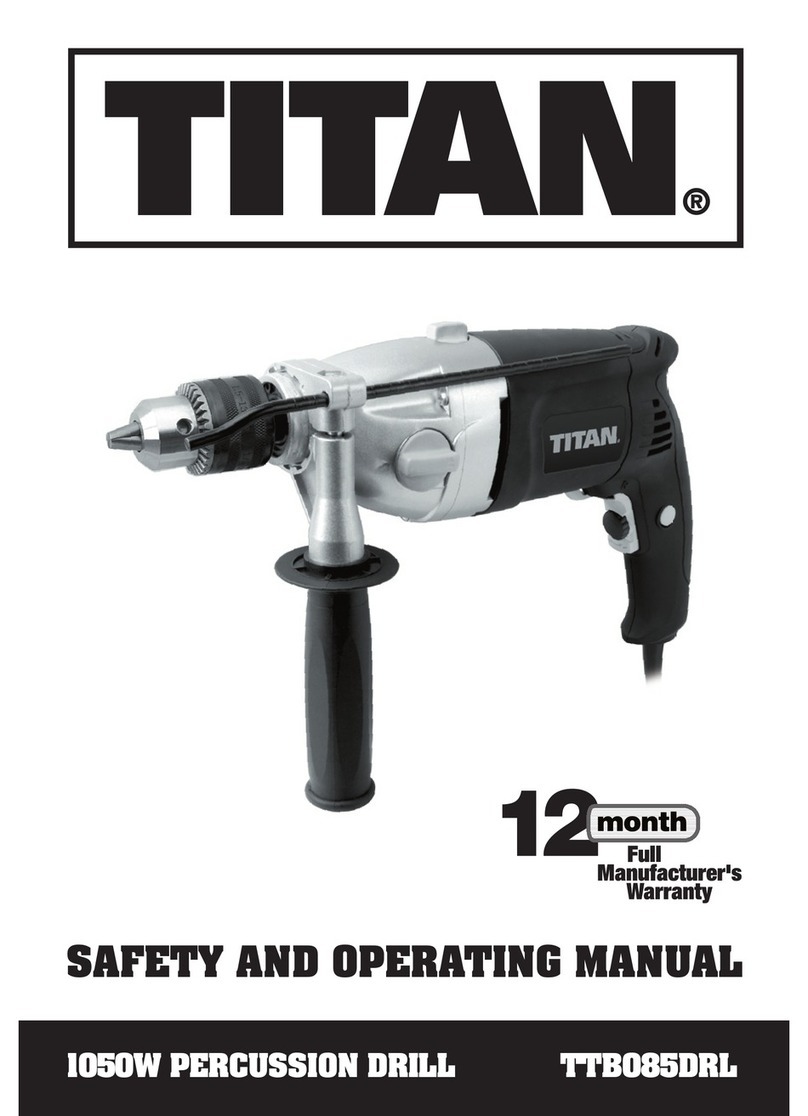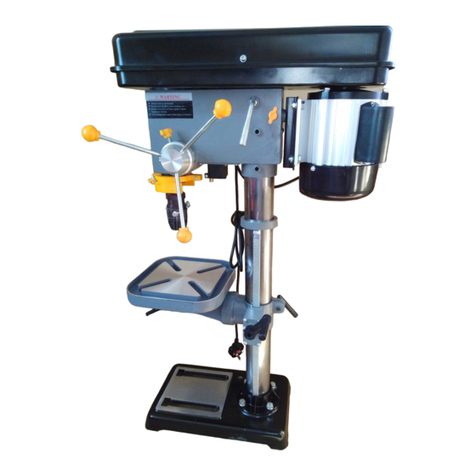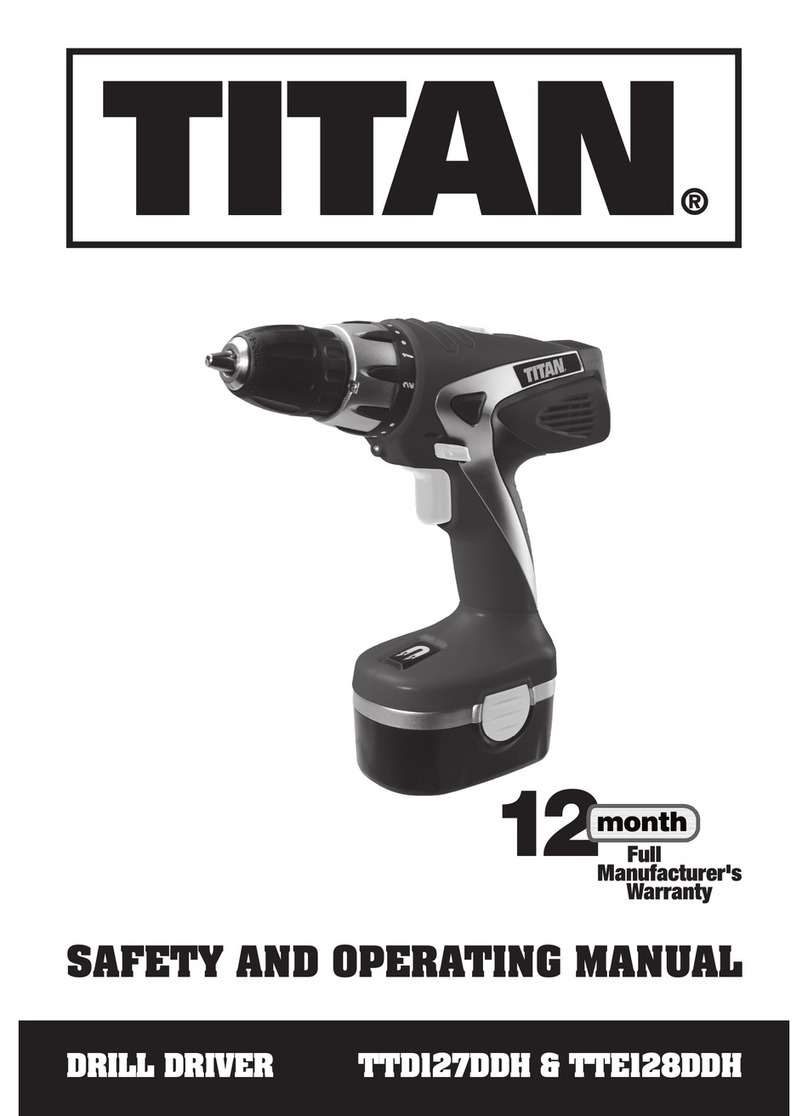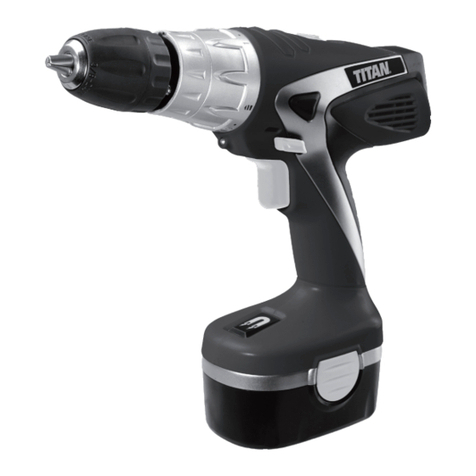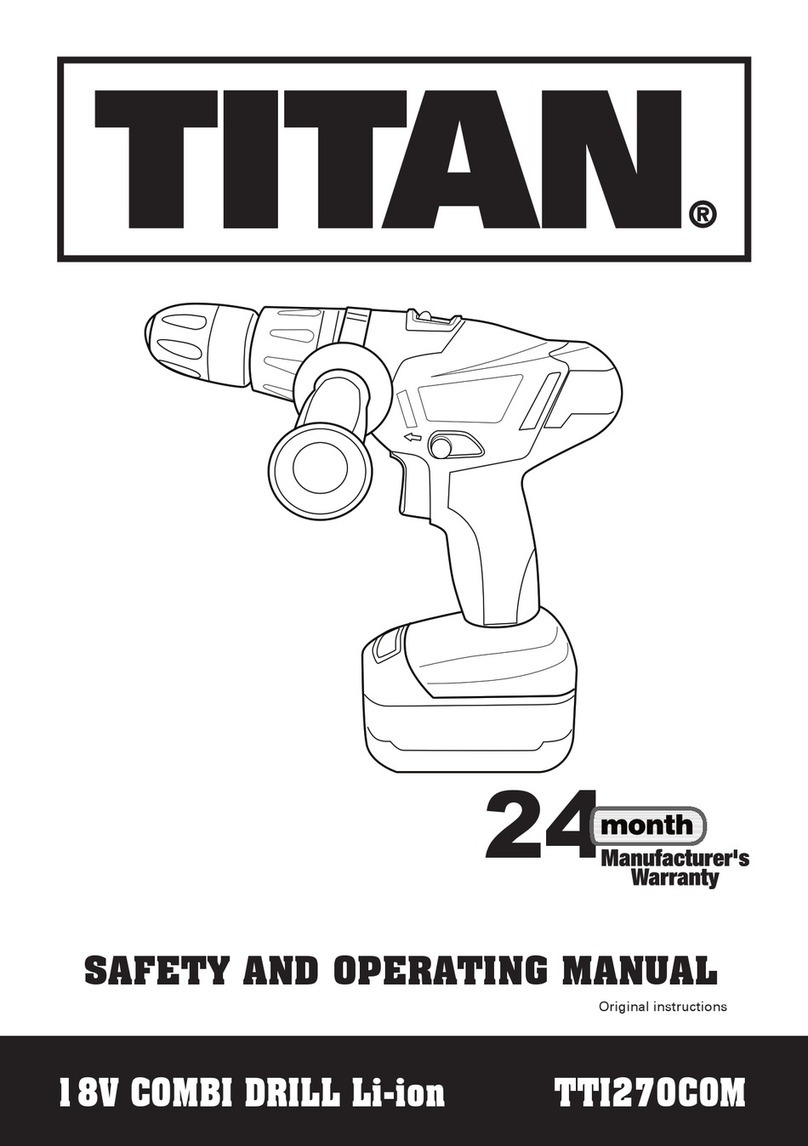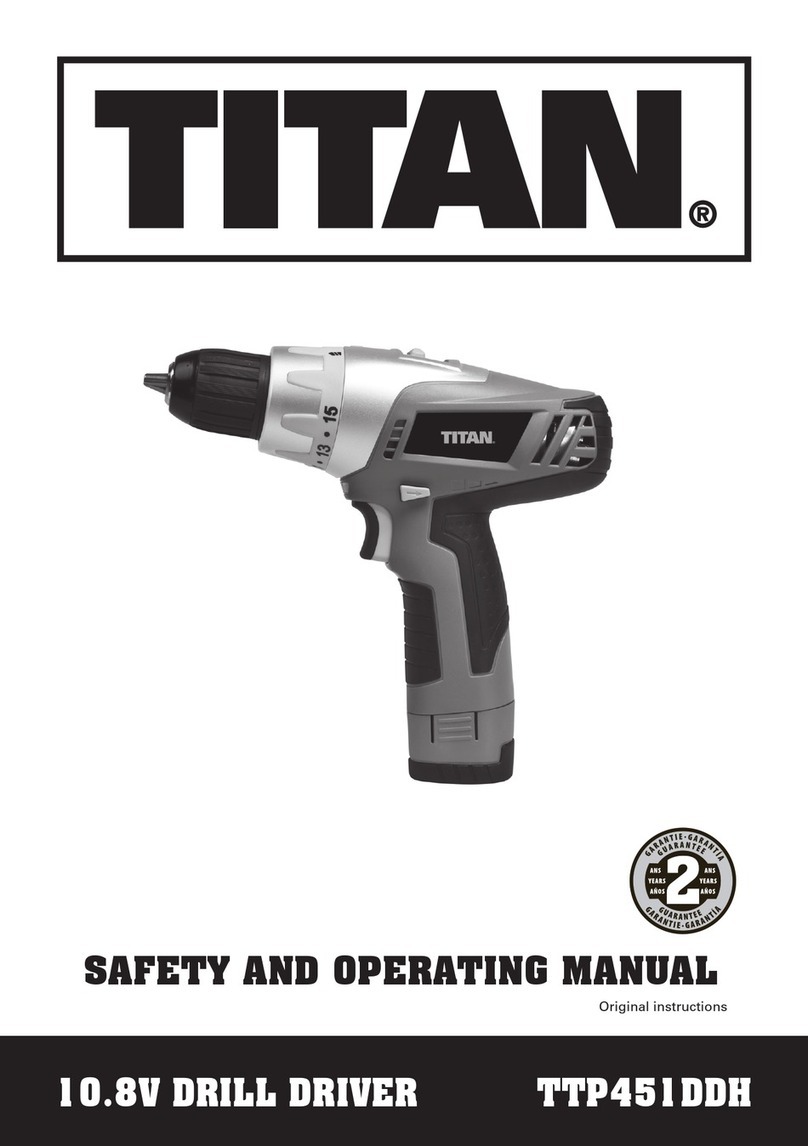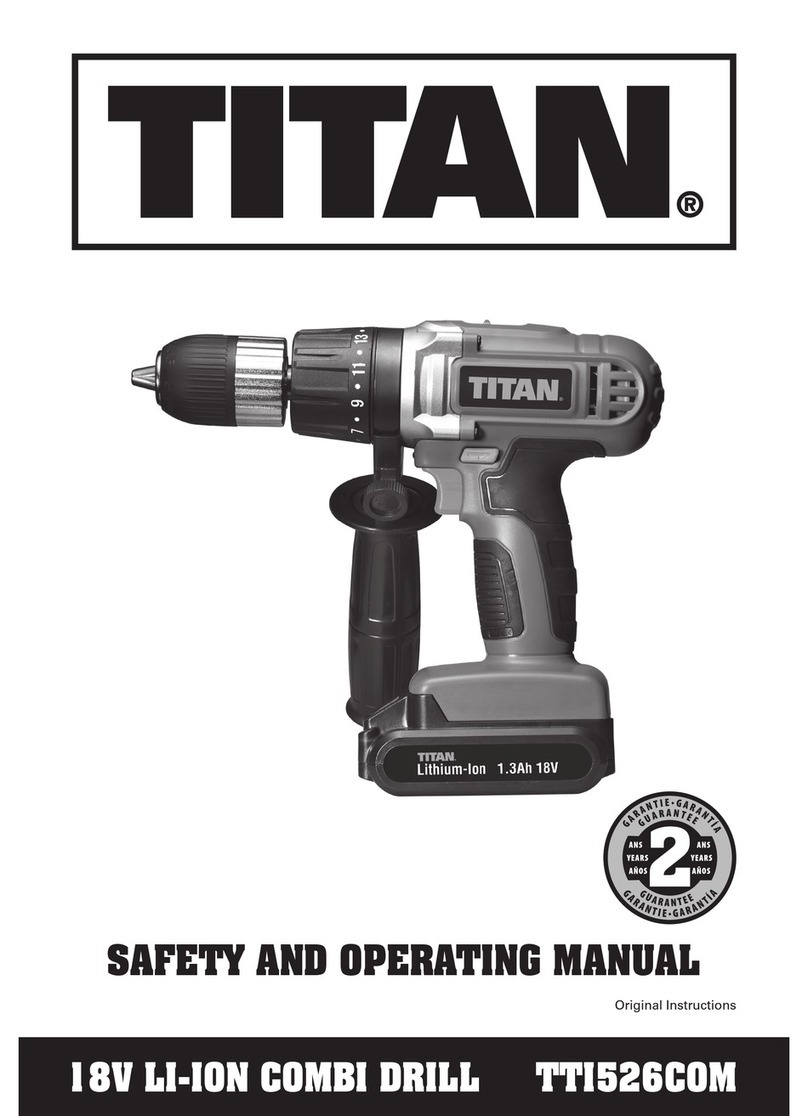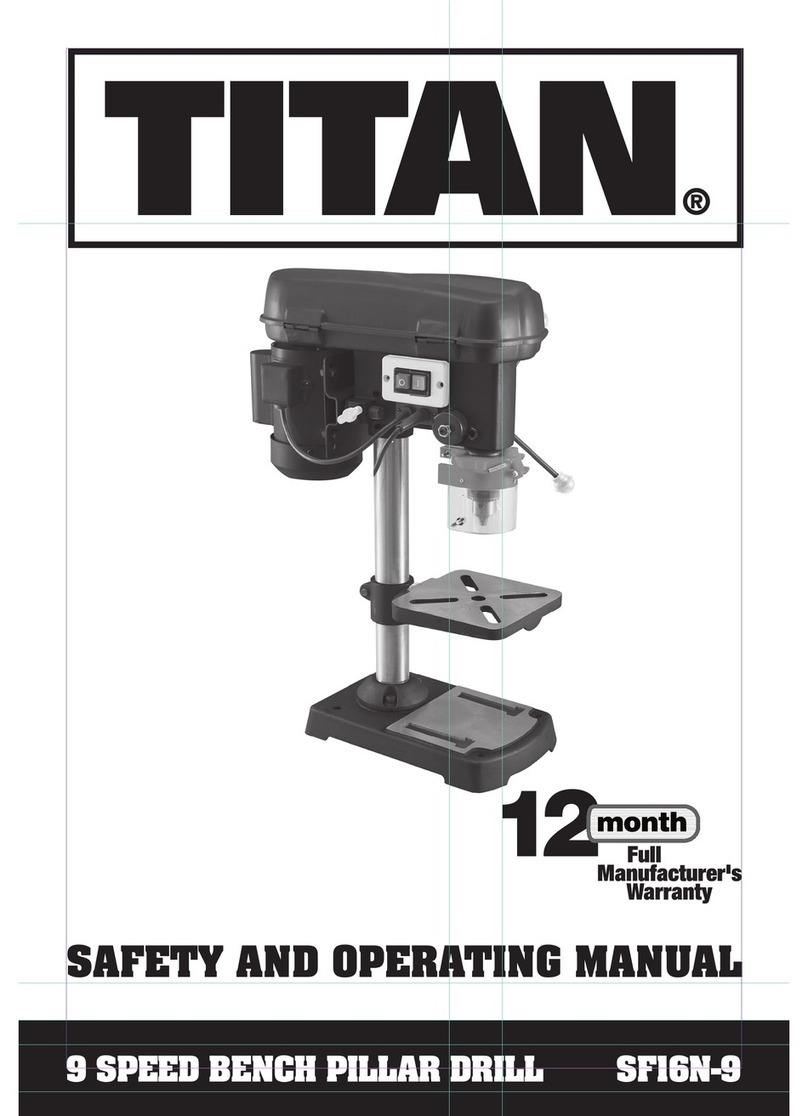
TTI871SDS
Getting started...
Safetyinformation EN
Additional safety warnings for rotary hammer
a) Use appropriate detectors to determine if utility
lines are hidden in the work area or call the local
utility company for assistance. Contact with electric
lines can lead to fire and electric shock. Damaging a
gas line can lead to explosion. Penetrating a water line
causes propertydamage.
b) Firmly tighten the auxiliary handle, hold the
machine firmly with both hands while working and
keepproperfootingand balanceatalltimes.Ensure
the machine is securely guided with bothhands.
c) Switch off the power tool immediately if the drill
bit jams. Be prepared for high reaction torque that
can cause kickback. The drill bit jams when:
•the power tool is subject to overload or
•it becomes wedged in the workpiece.
d) Secure the workpiece. A workpiece clamped with
clamping devices or in a vice is held more secure than
byhand.
e) For drilling without impact in wood, metal, ceramic
and plastic as well as for screw driving, tools
without SDS-plus are used (e.g., drill bits with
cylindrical shank). For these tools, a keyless chuck
or a key type drill chuck (not supplied) arerequired.
f) Replace a damaged dust protection cap
immediately. The dust protection cap largely prevents
thepenetrationof drillingdustintothetool holderduring
operation. When inserting the tool, pay attention that
the dust protection cap is not damaged.
g) Prevent dust accumulation at the workplace. Dust
can easilyignite.
h) Always wait until the machine has come to a
complete stop before placing it down. A rotating
drill bit can cause injury if not carefully controlled.9
MNL_18V Rotary hammer_IMGB_V01_211231.indd 9 12/31/21 6:49PM
